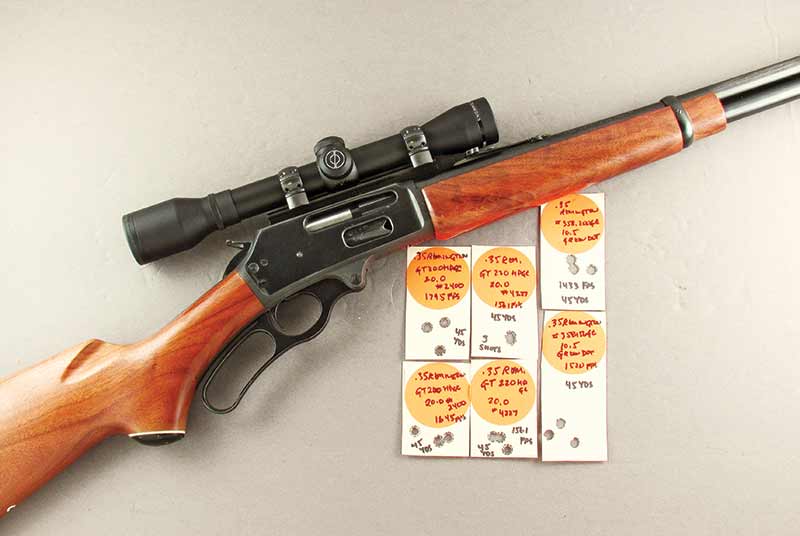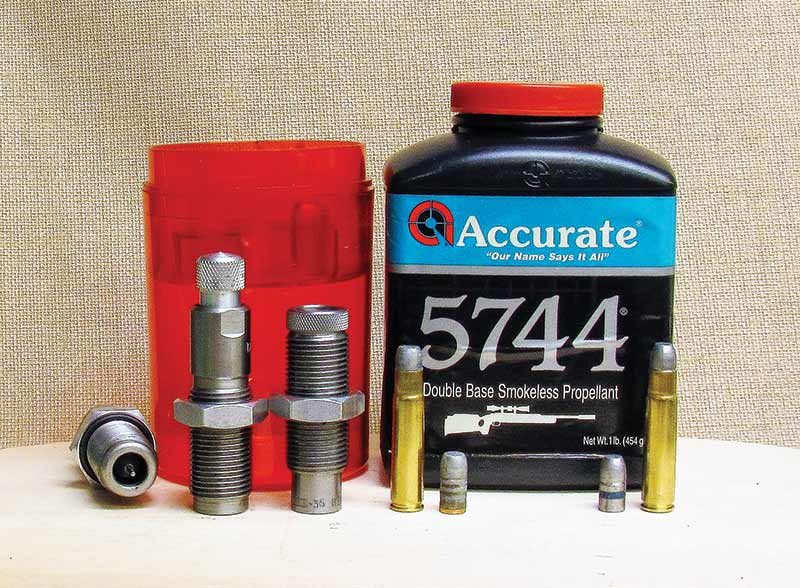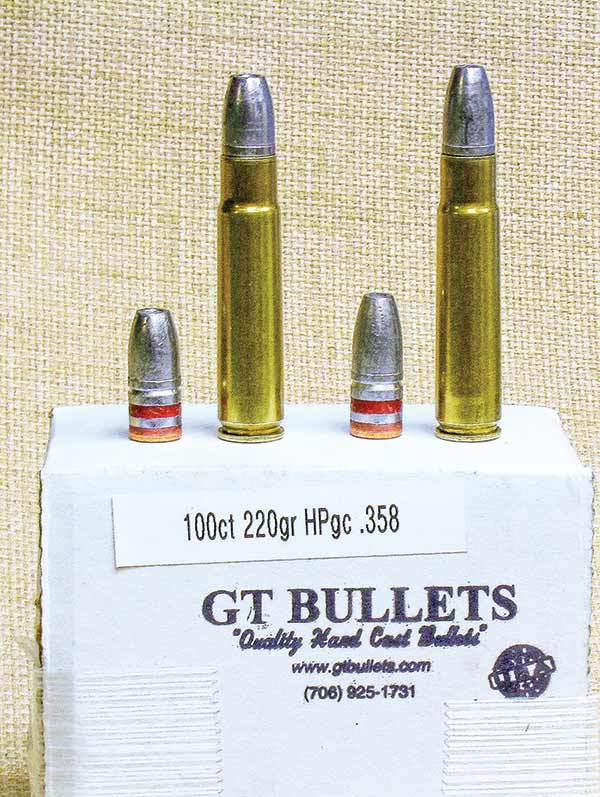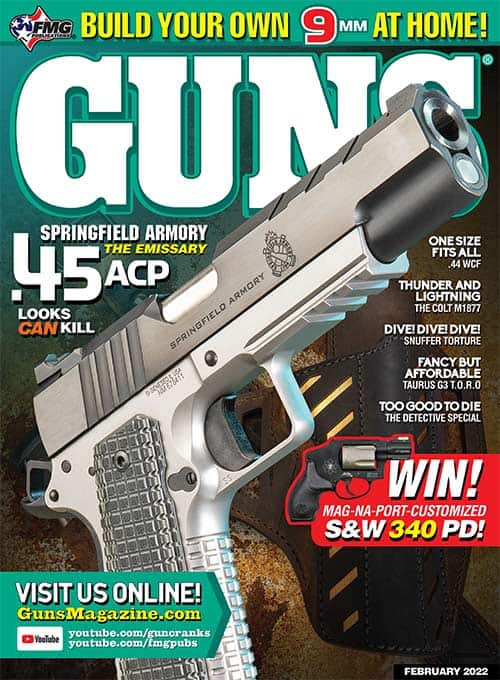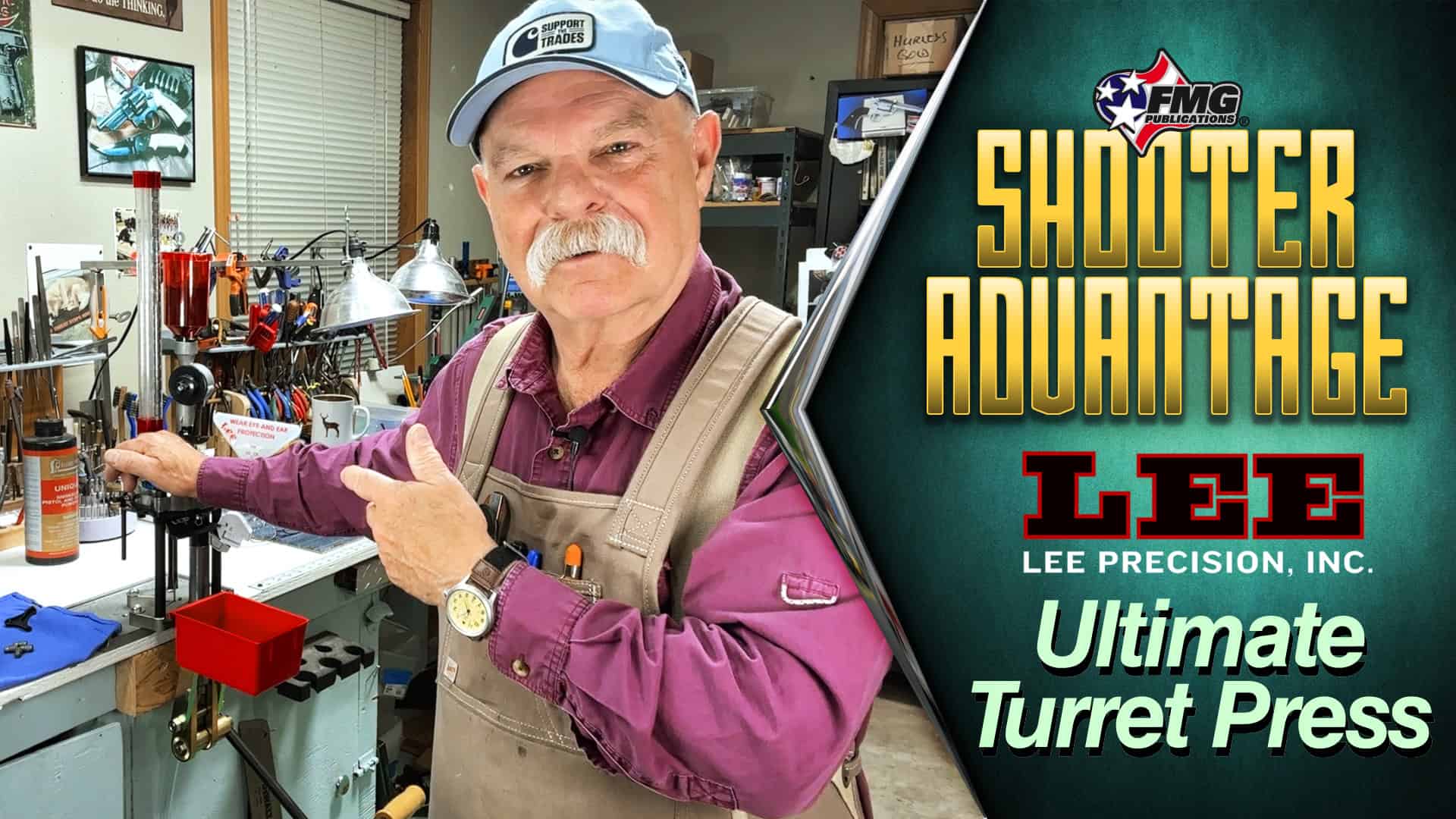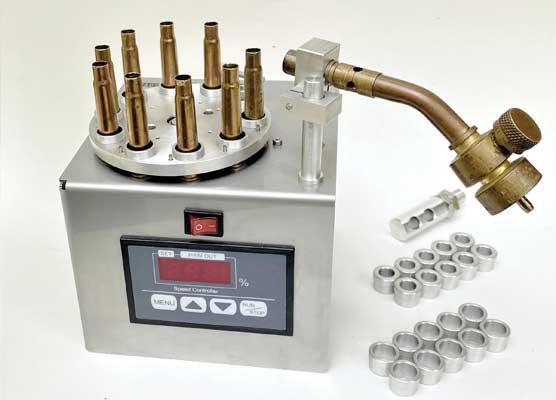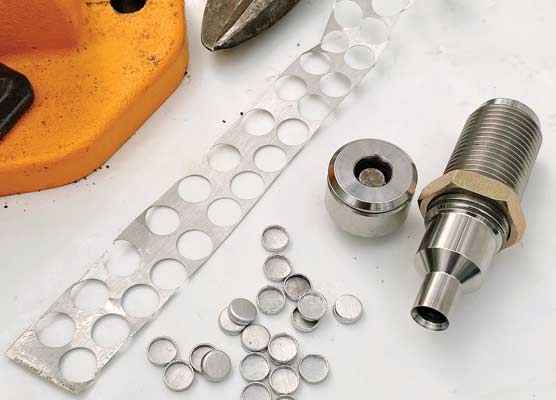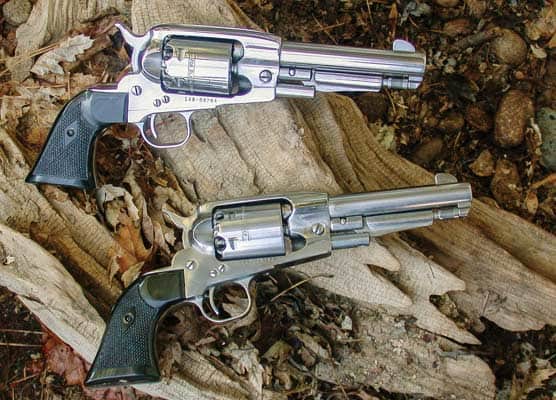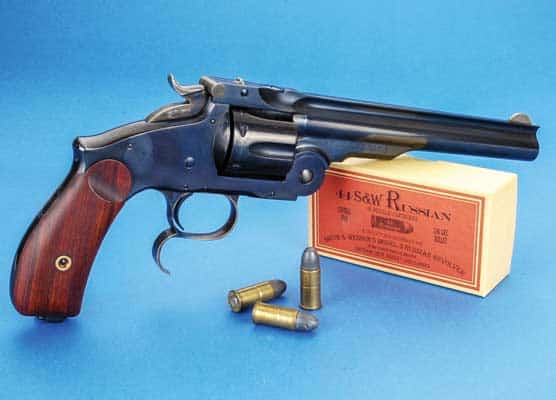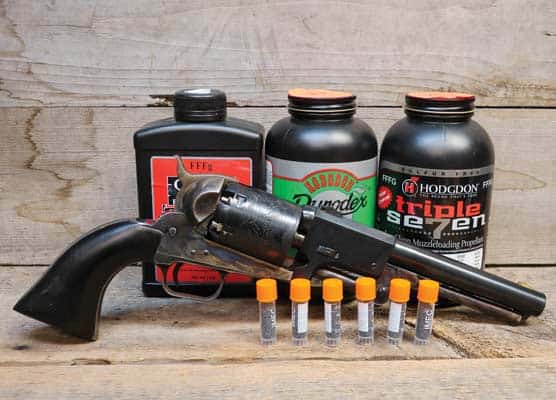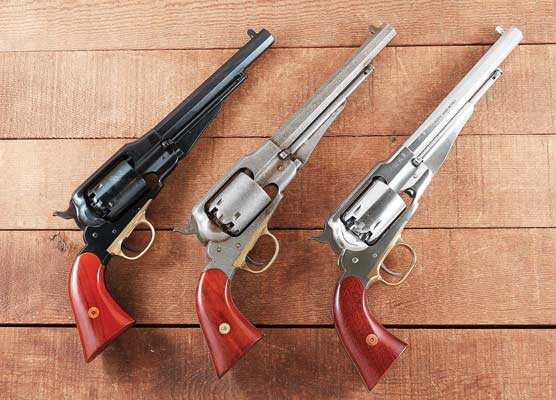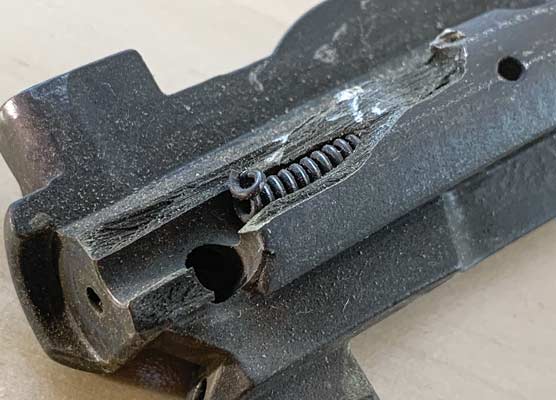.35 Rem. Cast Bullets
for Levers
Gas check is key
Leverguns are still my favorite rifles and my favorite leverguns are Trapper Models. Trappers are leverguns with a shorter than normal barrel length, usually 16-1/4″. At one time Marlin and Winchester both offered any barrel length within reason the customer wanted and there are pictures in the Brophy book on Marlins of .44-40s with both 12″ and 15″ barrels. Today, rifle barrels less than 16″ are regulated by the federal government and require a special license.
Micro Problems
All the .35 Rem.-chambered Marlins I have ever experienced have Micro-Groove barrels and this can sometimes be a problem with cast bullets. There are several factors when it comes to using cast bullets, including the hardness of the alloy, the muzzle velocity and most assuredly whether or not it is a gas-check bullet. Several years ago I was talking to my retired gunsmith friend, Bob Baer, and he was saying how Micro-Groove barrels just would not shoot cast bullets. Bob has produced many custom Ruger Single Actions and Marlin Leverguns.
I didn’t say anything about his comment concerning cast bullets, I simply shot a target and sent it to him. He called immediately when he received it. “How did you do this?” The target was three bullets virtually in the same hole shot at 50 yards. I mentioned the three things necessary to get similar results. This particular Marlin, a .444, uses a gas-check bullet weighing 300 grains and driven to a muzzle velocity of 2,000 fps.
The Oxford Dictionary spends no little space to define the word frustration. When it comes to cast bullets in rifles, frustration can be defined in two words, namely Micro-Groove. This can easily be illustrated with the results from shooting one load through three different Marlin .35 Remington leverguns, all with Micro-Groove barrels. I used the same bullet, same brass, same powder charge and same primer for all the loads used.
With my pistol-gripped 20″ Marlin fitted with a 4x scope, this particular load put three shots in 1-5/8″ at 100 yards. Switching to my Trapper Marlin with a Williams Receiver Sight, I used the same load to put three shots in 1-1/4″ at 40 yards. However, when I tried my third Marlin, which has a 20″ barrel and fitted with a Lyman Receiver Sight, I got keyholes, bullets that hit the target sideways, at 45 yards. Same loads, same style rifles, but drastically different results.
Reloading
Reloading cast bullets in the .35 Remington is accomplished pretty much the same way as I do with jacketed bullets, but I double the steps by adding two special Lee dies to my Lee .35 Remington dies. I first use the Lee Universal Expanding Die to open the case mouth to easily accept cast bullets. This prevents shaving of lead as the bullets are seated. Bullets are seated with the standard seating die, however, it is backed off to avoid crimping. Once the bullets have all been seated over the proper powder charge, I then use the Lee Factory Crimp Die. This is a Collet die and squeezes in with four sections rather than one circular crimper. It is very easy to set and well worth the extra time and effort to reload cartridges.
Bullets of choice include the Lyman #358156 GC, NEI #358.200 GC, CPBC 187-grain WFNGC and two gas-checked hollowpoint from GT Bullets weighing 200 and 220 grains. Before loading actual rounds I make up dummy rounds to make sure they will feed through the action and chamber. It is often necessary to experiment with overall length as some bullets seated in the crimping groove will not chamber. Powders of choice for using cast bullets include Alliant’s #2400, Hodgdon’s IMR 4227, Accurate #5744, Accurate #2015 and for milder loads Alliant’s Red Dot and Green Dot.
My Custom Trapper .35 Rem. is mostly shot at distances of 50 yards or less. This is a gun designed for relatively up close hunting in heavy brush or timber and is perfectly suited for deer, feral pigs, black bear and at reasonable ranges, will certainly handle elk. I have long used RCBS .38 cast bullets starting back in the late 1970s in Long-Range Silhouetting. Their #35-180 FNGC Silhouette was specifically designed for the .357 Magnum and .357 Maximum. Loaded over 20 grains of #2400 results in a muzzle velocity of 1,770 fps and a 3/4″ group for three shots at 45 yards. The heavier RCBS #38-200 FNGC I believe was originally designed for the .35 Remington. Loaded over the same charge of 20 grains of #2400 results in 1,740 fps and three shots in 1-1/8″. Either of these loads would be fine for close-range hunting. Another bullet that does well with this same powder charge is the GT Bullets HPGC. I use both the 200- and 220-grain bullets for muzzle velocities of 1,660 fps and 1,585 fps respectively for groups right at 1″.
The Lyman #358156GC was originally designed by Ray Thompson in the 1950s and remains probably the best standard-weight cast bullet for use in .357 Magnum sixguns. Loading it in .35 Remington brass over 10.5 grains of Green Dot yields just under an easy-shooting 1,500 fps with groups well under 1″.
Getting Longer
Switching to the 20″ .35 Remington Marlin and shooting at 100 yards show excellent performance with the GT Bullets. Both the 200- and 220-grain HPGCs loaded over 20.0 grains of #4227 yields very easy shooting muzzle velocities of 1,600 fps and 1,560 fps and groups right at 1-1/2″ for three shots. At 50 yards using the same rifle it is a rare load that doesn’t stay well under 1″. This includes the RCBS #35-200FNGC with 20.0 grains of #2400 and a muzzle velocity of 1,775 fps; RCBS #38-180 FNGC, 20.0 grains of #2400, 1,755 fps; GT200 GCHP and 220 GCHP over 20.0 grains of #2400 for 1,750 fps and 1,800 fps respectively. My most accurate load has proven to be the 187 CPBC (Cast Performance Bullet Company) over 30.0 grains of Accurate #2015 for 1,725 fps.
Cast bullets in the .35 Remington can give some very enjoyable shooting and starting with gas-check bullets will avoid a lot of problems. You should always check the overall length needed to both feed through the action and chamber before loading up a large batch of ammunition. With any of these cast bullet loads, both the rifles and I will last a lot longer.
